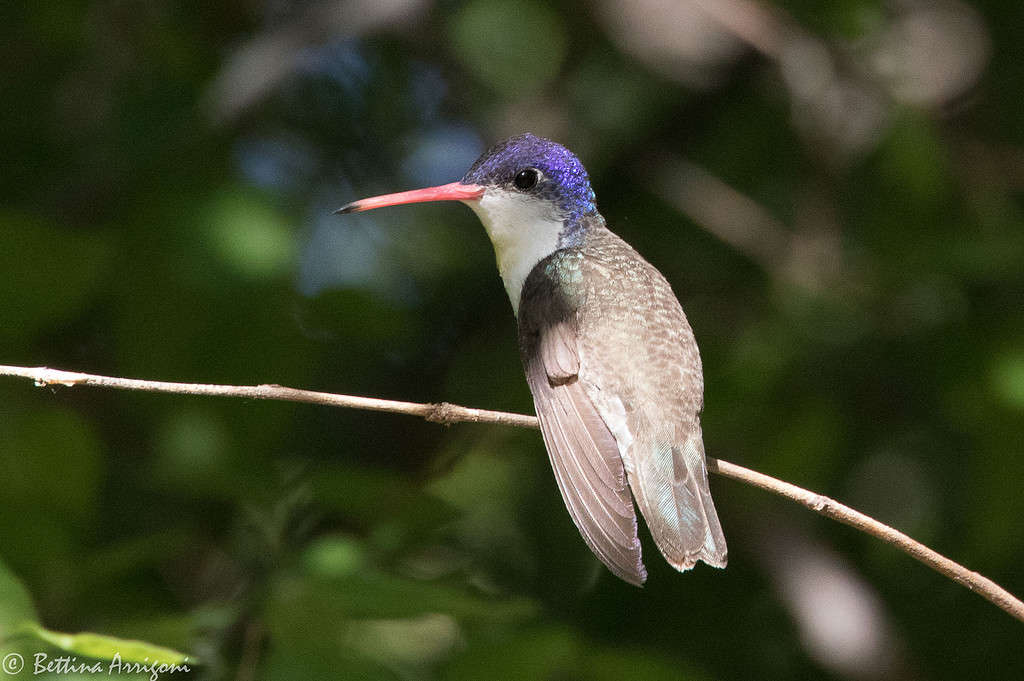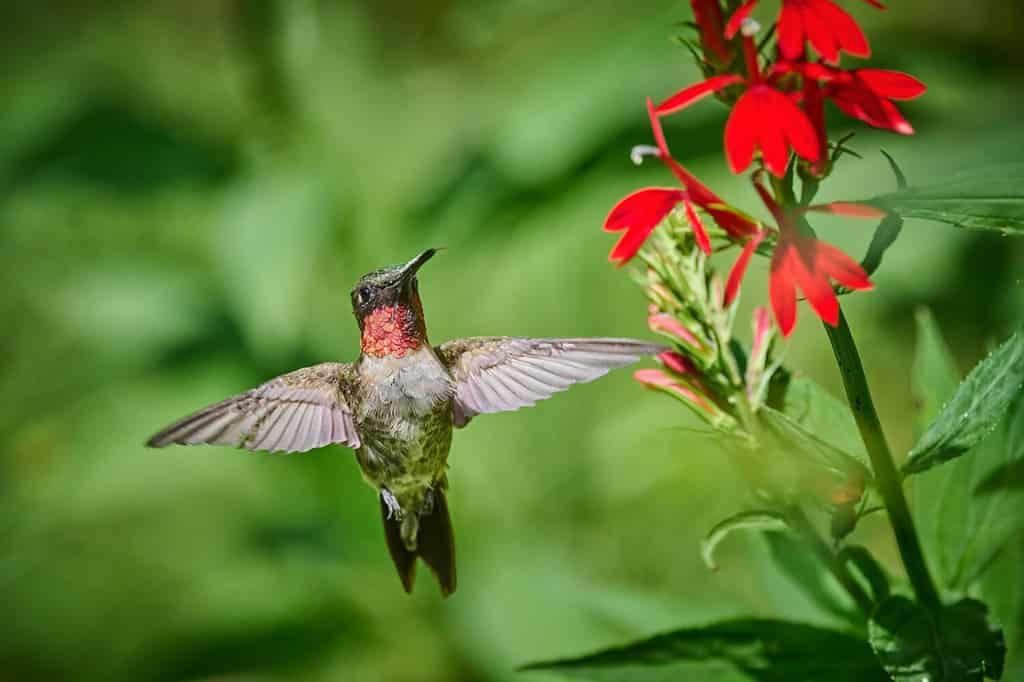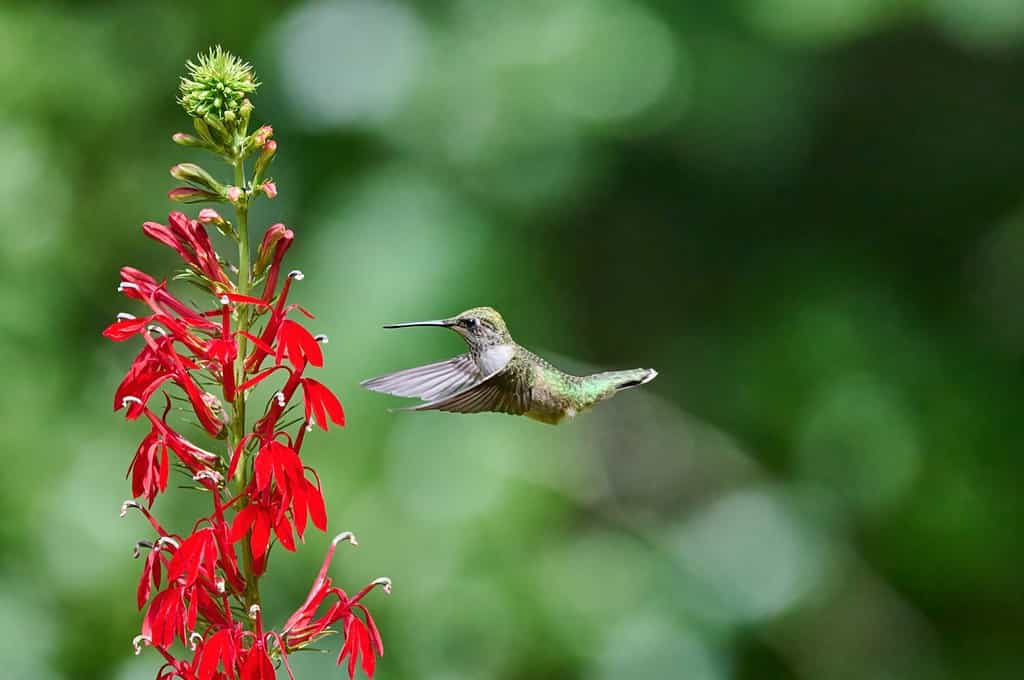Hummingbirds are tiny, vibrant, jewel-colored birds. Their rapidly fluttering wings allow them to hover over flowers while drinking nectar. In the spring and summer, many gardeners and birdwatchers alike enjoy setting out sugar-water-filled birdfeeders to nourish these tiny creatures. However, you may notice that fewer appear as the summer draws to a close. This article covers basic facts about hummingbirds, which species live in Wisconsin, and when hummingbirds in Wisconsin migrate south for the winter months. Let’s jump in now!
About Hummingbirds
Hummingbirds are members of the avian family Trochilidae. These tiny creatures are small, weighing as little as 1.95 grams and growing only as large as 20 grams (or .70 ounces). Hummingbirds have long, thin bills and small wings. Male hummingbirds frequently have throat plumage that has an iridescent quality that makes it appear to be vibrant colors, with the exact shades varying on the species of hummingbird.
These little birds are tiny but mighty. Hummingbirds are the only vertebrates that can hover in the air, continuing to fly while staying in one place. This allows them to hover in the air while drinking the nectar they need to gather from flowers. In fact, hummingbird wings beat about 70 times each second when in direct flight, but can get up to 200 beats per second when they dive from the air. Their hearts also beat incredibly quickly. Some hummingbirds’ hearts beat 225 times each minute at rest, but over 1,200 times each minute while flying.
Powering these tiny but powerful birds takes plenty of food. Hummingbirds are dependent on the flowering seasons of plants, though some hummingbirds also eat small insects.

There are more than 360 species of hummingbirds, including the violet-crowned hummingbird pictured above. However, only a small fraction of these live in the
United States
.
©Bettina Arrigoni, CC BY 2.0, via Wikimedia Commons – License
Hummingbirds in Wisconsin
Hummingbirds are a rare and special sight in Wisconsin! There are only a few species that make their way through this northern state, and only one that nests in Wisconsin. You may see Anna’s hummingbirds, calliope hummingbirds, Costa’s hummingbirds, green violetear hummingbirds, magnificent hummingbirds, and Refous hummingbirds, which have been spotted traveling through Wisconsin but which are extremely rare. If you see one of these, you are very lucky! Wisconsin is outside of their normal geographic range, so enjoy any that you spot.
Only a few hummingbirds might stay in Wisconsin year-round, while most migrate south for the cold months.
About Ruby-throated Hummingbirds
Ruby-throated hummingbirds, also known by their scientific name Archilochus colubris, are Wisconsin locals. While some members of the species migrate south to enjoy the winter, others stay all year long. Male members of the species have a bright red gorget, or throat, and metallic green-colored top feathers. These small hummingbirds are tiny, only reaching 2.8 to 3.3 inches in length. Female members of the species have white throats and are a little bit larger than males. These birds typically live to be 3 to 5 years old, though both males and females have been found living longer.

Adult male ruby-throated hummingbirds have beautiful red throats and feed on nectar from flowers such as the cardinal flower (
Lobelia cardinalis).
©Patrick Jennings/Shutterstock.com
Hummingbird Migration
Hummingbirds tend to migrate throughout parts of the U.S. in order to sustain their voracious diets on flower nectar. Though their migration varies throughout the U.S., hummingbirds tend to migrate in order to track flowering seasons. For example, in parts of the western United States, hummingbirds move from the lowlands in the springtime to the mountains in the summer.
Though some hummingbirds stay in Wisconsin all year long, others begin to migrate south as early as August. The majority of migrating ruby-throated hummingbirds leave Wisconsin by September, with a few stragglers sticking around into October. If you maintain a hummingbird feeder, you can take yours down in the middle of October or after you have stopped spotting any of these tiny creatures for several weeks.

Ruby-throated hummingbirds are the only hummingbird species that live natively in Wisconsin.
©Patrick Jennings/Shutterstock.com
Other Hummingbird Facts to Know
- Hummingbirds tend to be unsociable, even feisty. They do not depend on other hummingbirds for survival, so can view other birds in their own species as competition for flower nectar. As a result, some hummingbirds may even appear territorial.
- Hummingbirds have around 900 feathers, which is the fewest number of feathers of any bird species. This helps them stay lightweight!
- There are 17 species of hummingbirds that regularly nest in the United States. However, most parts of the country are only home to one or two species that breed in the region. The ruby-throated hummingbird is the only species that nests east of the Mississippi River.
- Many other hummingbird species live in more tropical regions. In fact, there are over 360 species of hummingbirds around the world!
- Hummingbirds lay tiny eggs, which can be so tiny that they are as small as a pea!
The photo featured at the top of this post is © David Kish/iStock via Getty Images
Thank you for reading! Have some feedback for us? Contact the AZ Animals editorial team.






